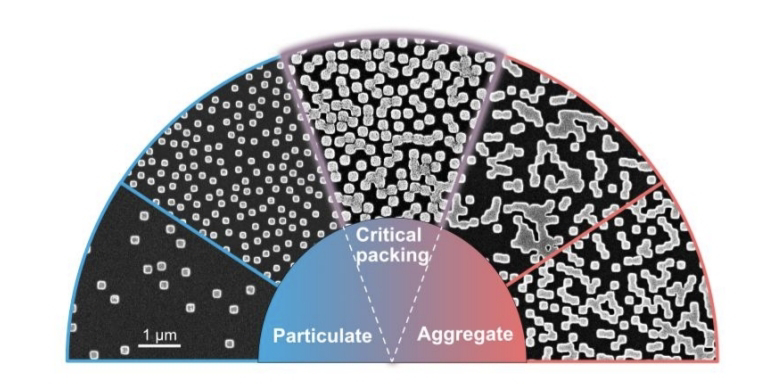<< Disordered metasurfaces provide a versatile platform for harnessing near- and far-field scattered light. Most research has focused on either particulate topologies composed of individual, well-identified metaatoms or, to a lesser extent, semi-continuous aggregate topologies without well identified inclusions. >>
Here, AA << uncover an intermediate critical packing regime characterized by metasurface morphologies in which a significant fraction of metaatoms begin to connect. (They) experimentally demonstrate that, at this threshold, the properties of the scattered light abruptly change and interpret this change as a marked transition in the statistics of the photon density of states. >>
<< Unlike percolation metal films, this transition affects not only the specular but also the diffuse components of the scattered light in a profound way. (AA) results introduce critical packing topologies as a novel design strategy for manipulating the spectral and angular characteristics of light using ultrathin optical coatings. Emergent functionalities include color shifts in diffuse light driven by multiple scattering and surface whitening, >>
Miao Chen, Adrian Agreda, et al. Emergent scattering regimes in disordered metasurfaces near critical packing. arXiv: 2505.02244v1 [physics.optics]. May 4, 2025.
Also: disorder & fluctuations, transition, in https://www.inkgmr.net/kwrds.html
Keywords: gst, disorder, fluctuations, transitions, disordered metasurfaces, ultrathin optical coatings, near- far- field scattered light, critical packing regime.



